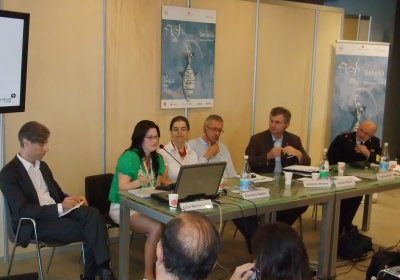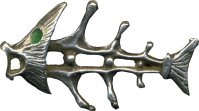Direct sales and traceability

 Taha Sutcliffe from British Columbia, Canada, has a family background in fishing and became engaged in supporting the demands of fishermen to be more active in direct marketing of their produce and securing sustainability of their operations. Among the principles of their association is to operate a cost-effective marketing system of direct value to the fishers and respect for the rules. All products are labelled and story-telling is encouraged through an IT platform, blogging and presence on Facebook. To their surprise and even though the participants are mostly small-scale fishers, some of their halibut (Hippoglossus stenolepis), sablefish (Anoplopoma fimbria), salmon (Oncorhynchus sp.) and lobster have travelled half the world to Europe and Asia in addition to reaching markets on the Atlantic side of North America.
Taha Sutcliffe from British Columbia, Canada, has a family background in fishing and became engaged in supporting the demands of fishermen to be more active in direct marketing of their produce and securing sustainability of their operations. Among the principles of their association is to operate a cost-effective marketing system of direct value to the fishers and respect for the rules. All products are labelled and story-telling is encouraged through an IT platform, blogging and presence on Facebook. To their surprise and even though the participants are mostly small-scale fishers, some of their halibut (Hippoglossus stenolepis), sablefish (Anoplopoma fimbria), salmon (Oncorhynchus sp.) and lobster have travelled half the world to Europe and Asia in addition to reaching markets on the Atlantic side of North America.
Antonio Attorre of Slow Food, Marche, told another story with examples of how local fishermen organised themselves in Ancona to ensure, with the help of their organisation, Lega Pesca, to enforce a strict discipline in their work concerning the type of allowable nets, the frequency of fishing and the sanitary conditions from on-board handling to sales. In another case, mussel farmers in Porto Nuovo (Ancona) had over time not only managed their trade well in a protected bay, but developed direct sales of Sunday-harvests through setting up eateries, which attract regular customers appreciative of the homely setting and freshness of the product.
J
In the concluding remarks, I highlighted the scale of the problem of IUU fishing, which has significantly increased over the last years as more and more fisheries collapse from overfishing, yet demand is expanding around the globe. Increasingly urbanised consumers have little direct knowledge of different species and their living conditions and widespread fraud in labelling make a mocking of consumers, who would like to buy only sustainably caught and produced fish. FishBase, the global encyclopedia on currently 32,000 species of fish is a great source of information and readily used by several hundred thousand users world-wide month after month. It brings the best available science within reach of anybody with a internet access or a mobile phone. It spreads knowledge about the identity of fishes backed up with pictures, distribution maps and much more information, including 220,000 local names in many languages thanks for a wide network of voluntary collaborations. It also provides ready information about the minimum size at which species reproduce in different parts of the oceans to support sustainable production and consumption. While this information is not sufficient to prevent fraud and malpractice, we have evidence that it helps enforcement. How? Feedback from customs officer in the guest book of FishBase suggest that they use it for an initial coherence check of the paper trail of imported fisheries products. This is much needed as the increase in trade has not been matched by an increase in their capabilities to execute controls. FishBase can give them a criterion to chose whether or not to carry out costly additional checks – and some penalties on identified frauds have proven the value of the system. For more information go directly to the search page of FishBase (note that links on fishnames in this report on Slow Fish 2011 lead you directly to the species summary page in FishBase).
 Nevertheless, we are faced with a dilemma. No amount of policing can ensure compliance with the rules when the economic incentives to fraud are as great as they are right now. At the same time, alternative systems based on re-establishing trust through more direct relations between producer and consumer are currently small-scale. This is an invitation to reflect together about new ways to strengthen enforcement of existing rules on the one hand, but also work towards renewed trust in economic exchanges.
Nevertheless, we are faced with a dilemma. No amount of policing can ensure compliance with the rules when the economic incentives to fraud are as great as they are right now. At the same time, alternative systems based on re-establishing trust through more direct relations between producer and consumer are currently small-scale. This is an invitation to reflect together about new ways to strengthen enforcement of existing rules on the one hand, but also work towards renewed trust in economic exchanges.
The panel was ably chaired by Stefano Masini, Coldiretti, Italy.









